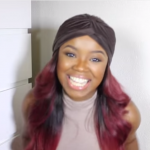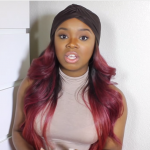Video Chat Explains Differences Between Protective & Low Maintenance Hairstyles. When You See It, You’ll Understand The Difference.
[memberplayer id=”3748″]
Protective styling video chat
When it comes to hair growth, many different protective styles have been throwing around as the number one way to grow long hair. There are some truths to that indeed and also there are some myths there as well. It’s important to differentiate between the two because protective style doesn’t work the same for everyone. It has been recommended to use protective styling when transitioning to natural hair. It’s the right advice but as with anything there are some caveats, for example, as noted in the video you can still experience breakage if you wear your bun, or twist, or braid in the same area. It’s good to switch things up a bit every now-and-then.
Protective Styles
The idea behind protective styling is unvarnished; the less the hair strands are exposed, the less they break, and the longer they grow. Pretty straightforward right! Well, not so fast, don’t let that simplistic answer fool you.
A Protective style is a way of wearing the hair that keeps it out of the way. It protects (no pun intended) your hair from everyday environmental toxins and air pollution. Also, The hair is not loose on your back touching your clothing which draws the moisture from it and leaving it dry.
It’s low maintenance, hence why – for so many, it’s the preferred style when transitioning to natural hair or just want a break from doing hair all the time. You’re not combing and pulling on the strands which prevent breakage. Here are some example from the video of what can be considered a protective style: Buns, Wigs, U part wigs, Sew ins, Braids, Hats etc…
Low Maintenance Styles
According to megz, low maintenance styles are not protective styles. With low manipulation styles you do more with your hair, like simple styles that don’t require your hair to be tucked away for long periods of time. Unlike protective styles where you set and forget, low maintenance still require some attentions, this means you’re not wearing your hair in the same way all the time. Protective styles can be said is the busy or lazy method and low manipulation is the less busy and more control method. Some example of low manipulation styles are: Braid outs, Twist outs, Bantu knots (if they are unraveled), Low manipulation styles can turn into protective styles if you are wearing a textured bun.









